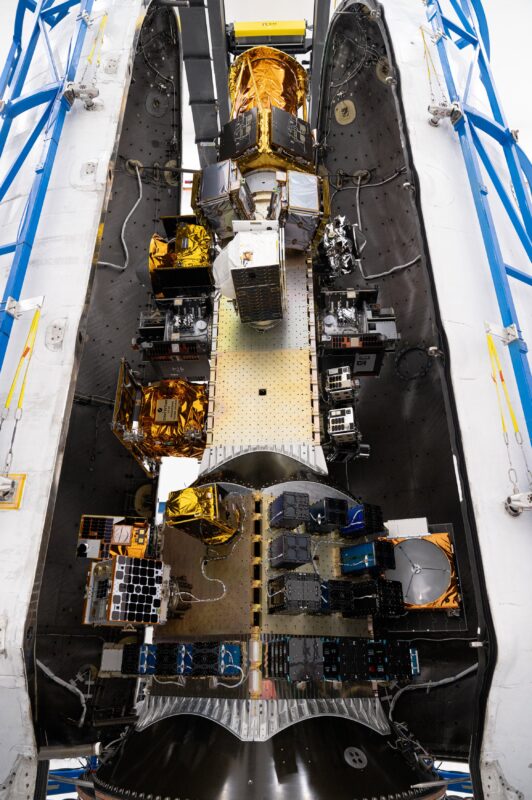Latest News

SpaceX’s Falcon 9 rocket before launch. Photo: SpaceX
SpaceX launched 131 payloads on the Transporter-12 mission to Low-Earth Orbit (LEO) on Jan. 14. This was SpaceX’s first rideshare mission of 2025.
The Falcon 9 rocket launched from Space Launch Complex 4E (SLC-4E) at Vandenberg Space Force Base in California at 10:10 a.m. PT. SpaceX has launched over 1,100 payloads to orbit for more than 130 customers across the rideshare program.
Transporter-12’s largest contributor to this launch, Planet Labs, sent the Pelican-2 satellite and 36 SuperDoves of Flock 4G to orbit. Pelican-2 is AI-powered with onboard integration using NVIDIA’s Jetson Edge AI platform. Planet plans to launch more Pelican satellites this year.
Other customers included German startup, Reflex Aerospace, which launched its first commercial satellite, SIGI, with a payload for Media Broadcast Satellite (MBS).
W-2, Varda Space Industries’ second orbital capsule, launched aboard Transporter-12 as well. The capsule carries payloads from the Air Force Research Laboratory (AFRL) and NASA.
The SpaceX launch also included three startups from India. Pixxel launched three satellites of its Firefly constellation, which are imaging satellites that aim to provide revisit capability to any location. Digantara sent a space camera for space debris object tracking. XDLINX sent Elevation-1, a 6U spacecraft with an E-band communications payload.
Spanish startup, FOSSA Systems, integrated three FOSSASats, reporting the satellites are 24 times larger than FOSSASat-1 and 12 times larger than the FOSSASat-2E series launched in January 2022.
SpaceX launched a number of orbital transfer vehicles on the mission, including LEO Express-2, the second OTV mission for Impulse Space along with D-Orbit’s Endless Sky and Ascend, the company’s 15th and 16th ION satellite carrier missions.
Exolaunch deployers carried cubesats for Spire Global, TU Berlin, OroraTech, and UnseenLabs. Spire had six LEMUR spacecraft on the flight. Exolaunch integrated four satellites for Iceye and constellr’s first thermal infrared monitoring satellite, Sky-Bee-1.
Transporter-12 also included the SEOPS-integrated satellite SAT GUS, which aims to allow people to take selfies in space with Earth as the backdrop in the “Space Selfie” project.
NanoAvionics sent SkyBee-1 and Absolut Sensing’s GESat CH4 monitoring demonstrator aboard its 16U cubesat.
Plan-S launched four more of its Connecta IoT satellites.
Dawn Aerospace announced its propulsion systems supported six satellites on the mission.
Fleet Space Technologies had two satellites on the mission, Centauri 7 and 8, manifested by Tyvak International.
ArkEdge Space launched two small satellites, AE1c and AE1d, into orbit aboard SpaceX’s Falcon 9.
Space Flight Laboratory deployed Canada’s Gray Jay Arctic surveillance technology demonstration mission: three microsatellites developed for Defence Research and Development Canada (DRDC).
The European Space Agency sent the Pathfinder Hawk satellite on the Transporter mission. It is the first IRIDE satellite for environmental, emergency, and security services for Italy.
Editor’s Note: This story has been updated with more details about the satellites onboard.
Stay connected and get ahead with the leading source of industry intel!
Subscribe Now